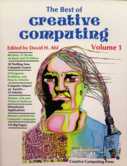Cascade Spawning Cycle

Sunday, I went on what will likely be my last organized ride for this year (regular readers are rejoicing right now).
Unlike some of the other rides I’ve done, this ride has a theme. As noted on the details page, this ride is based loosely on the salmon spawning cycle. You start next to Puget Sound in Myrtle Edwards Park (also hosting a “miles of fence and lots of big construction equipment” event at the same time), travel upstream to the Locks. That’s the “Chum run”, clocking in at 14 miles. Next up is the “Fit for a King” (as in “King Salmon”) loop at 33 miles, where you ride to Seward parks on Lake Washington, on to the locks, and then out to Puget sound, recreating the trip that a young salmon would take on its first journey to the sea.
New this year is the “Copper River Special” (named after seafood company in Alaska). This loop takes you around to West Seattle to Alki point, which is important to the salmon because it’s 11 miles in length (fun history fact – the Denny party landed at Alki Point in West Seattle in 1851. Arthur Denny, in a move to make his mark on the city, later named one of Seattle’s most prominent hills after himself. Disgruntled townfolk had it removed, and Arthur went on to found a hugely successfully 24-hour dining chain).
The copper river loop started at 44 miles on the website, morphed to 50 miles on the maps, and turned out to be 53 miles covering some of the worst pavement to be found in Seattle.
After winding along the picturesque Seattle waterfront parallel to the picturesque Alaskan Way viaduct (*that’s* why it’s “Copper river”!) (acting as a semi-permanent eyesore along Seattle’s waterfront), we headed across the bridge to West Seattle. I hooked up with a racer and his ex-racer friend (both wearing local team colors) for the trip around Alki, which was fast, bumpy, and a bit wimpy. We then headed back to downtown, up the hill, through the I-90 bike tunnel , and then down to Seward Park, the first food stop.
Following the “spawning cycle” theme, I had worked really hard getting from Puget Sound to Lake Washington, and then died after getting there. Unsure whether salmon get dehydrated, I decided to cover that front “just in case”.
In a rare nod to non-motorized transportation, the city of Seattle closes portions of Lake Washington Blvd for Bicycle Saturday and Sundays. Flat road, great scenery, no cars.
After skirting around Capital Hill (known for… well, you can search yourself if you want to know what it’s known for), the ride joined the Burke-Gilman trail, and led to Gas Works Parks, which has peerless views of downtown Seattle (over Lake Union), and some big ole’ rusty industrial equipment left over from when it’s use as a coal gassification plant.
At this point, things get a little hazy, but I managed to make it to the next food stop at the aforementioned Locks. I had reached the “just get this done” phase, and after a short rest, I headed out and up the steepest hills of the ride into Discovery park. There used to be a Navy base there, and it’s very eerie to ride through overgrown roads and tall fields of grass, with the occaisional perfectly painted and maintained structure in the middle of a field. Weird.
After finding our way out (markings were a bit vague), we headed on Magnolia Blvd, and then back along the trail to the starting point.
And therein lies the rub. To avoid the killer climb, the 14 mile loop goes the other direction on that same route, which means you have a mix of fast and slow riders going one direction and slow to very slow riders going the other direction. At one point there’s a small curved bridge. There were people walking their bikes, so I followed a slow group on the left, which ran into a group of walkers coming the other way and walkers trying to remount at the top. I decided to add to the confusion by getting off balance and falling off my bike, which sort of punctuated the experience. In my mind, it’s unacceptable for Cascade to let that sort of thing happen – if you’re going to use that route, you have to have people on both side make sure everybody dismounts for that bridge.
After my horizontal excursion, I headed back to the park for the end of the ride.
Rant #2 – why is finish line food so bad for you? I mean, I don’t mind a little indulgence, but when the only thing you can get is a burger on a white bread bun or some suspicious salmon (ah, the salmon theme again), it’s not the best of all worlds.
Recommended? Well, I don’t know. It’s bumpy, could be windy, and you have lots of inexperienced cyclists to watch out for (worse than Flying Wheels).












Recent Comments